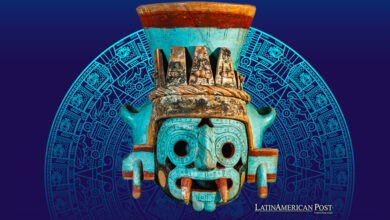“The Photographer and the Postman”: a Documentary about a Crime that Shocked Argentina
The Netflix production reconstructs the murder of photographer José Luis Cabezas and the implications that the case had on Argentine society. This is what you should know about "The Photographer and the Postman" .

Photo: Netflix
LatinAmerican Post | Joshua Radesca
Listen to this article
Leer en español: “El fotógrafo y el cartero”: el documental que repasa un crimen que conmocionó a Argentina
There are crimes that have the effect of shaking an entire society. The murder of José Luis Cabezas was one of them. Cabezas was a photojournalist for the magazine "Noticias". His work appeared as part of multiple articles that denounced and exposed powerful figures from Argentina in the late 1990s.
On January 25, 1997, in a place 15 kilometers from Pinamar, a seaside resort in the province of Buenos Aires, they found a burned-out white Ford Fiesta. Inside was a handcuffed corpse with two bullet wounds to the skull. It was about Cabezas, who hours before had been seen leaving a party held with acquaintances and other colleagues with whom he was covering the summer season in Pinamar.
The murder of the photographer immediately shocked and disturbed the journalistic union and Argentine society, who united in the call of "Don't forget Cabezas" and demanded answers and justice.
Since May 19, Netflix has made available to its subscribers the documentary "The Photographer and the Postman: The Crime of Cabezas", which reconstructs in detail this case that involves journalism, politics, powerful businessmen, corrupt police forces, and criminal groups.
The production was in charge of Vanessa Ragone and the direction of Alejandro Hartmann. Dupla was also responsible for "Carmel: Who killed María Marta?" (2020), a Netflix documentary miniseries that reviews the extraordinary circumstances surrounding the murder of sociologist María Marta García Belsunce.
Also read: “42 Days of Darkness”: Everything You Need to Know About the First Chilean Netflix Serie
The Reconstruction of the Case
The documentary makes a chronological reconstruction of the events surrounding the murder of the photojournalist and the questions that it gave rise to, the most important being who could have committed a crime of such magnitude.
The documentary includes statements from friends of the photographer, journalists who covered the case, the Cabezas family's lawyer, and important political figures at the time the crime occurred. It also uses material from the archive to contextualize the political and social environment in which the attack against José Luis Cabezas took place.
At the media, police, and judicial level, the case had ups and downs. Confusion reigned in the early stages of the investigation. Several were suspected and arrested. However, Alfredo Yabrán, a powerful Argentine businessman shrouded in an air of secrecy and mystery, would soon appear as a possible murderer.
Yabrán was suspicious of his image to the point that no media outlet had a photo of his face. José Luis Cabezas was the first to photograph it. The snapshot was taken while the businessman was walking on the beach and the image became one of the most notorious covers of the News Magazine.
"Don't Forget Cabezas"
The documentary reviews this heinous crime. It manages to delineate the pain of the people close to the victim, the social media, and the political impact of the homicide. The production also operates as a memory exercise that presents to new generations and viewers from all latitudes an event that exposed various areas of corruption related to figures of power of that time in Argentina. All this with a coherent and well-structured narrative that makes it easy to follow the details of what happened. In this way, "The Photographer and the Postman: The crime of Cabezas" stands as a title that pays homage to the motto shouted so many times by those who demanded justice: "Don't forget Cabezas".





